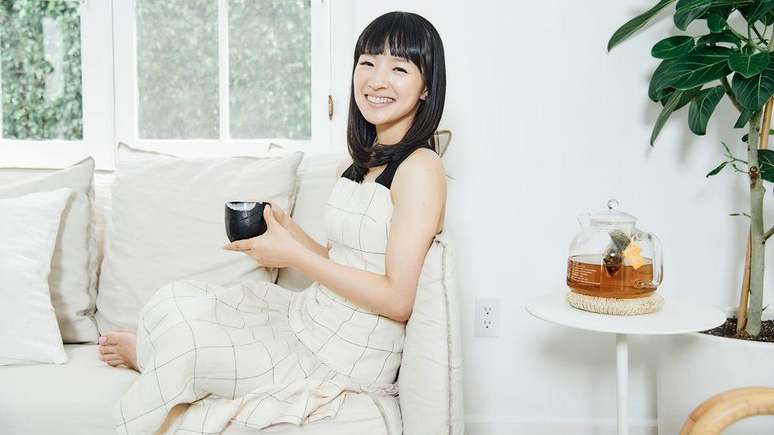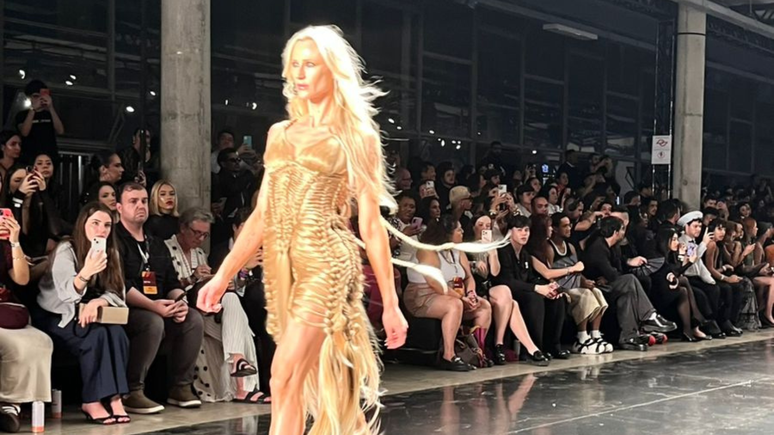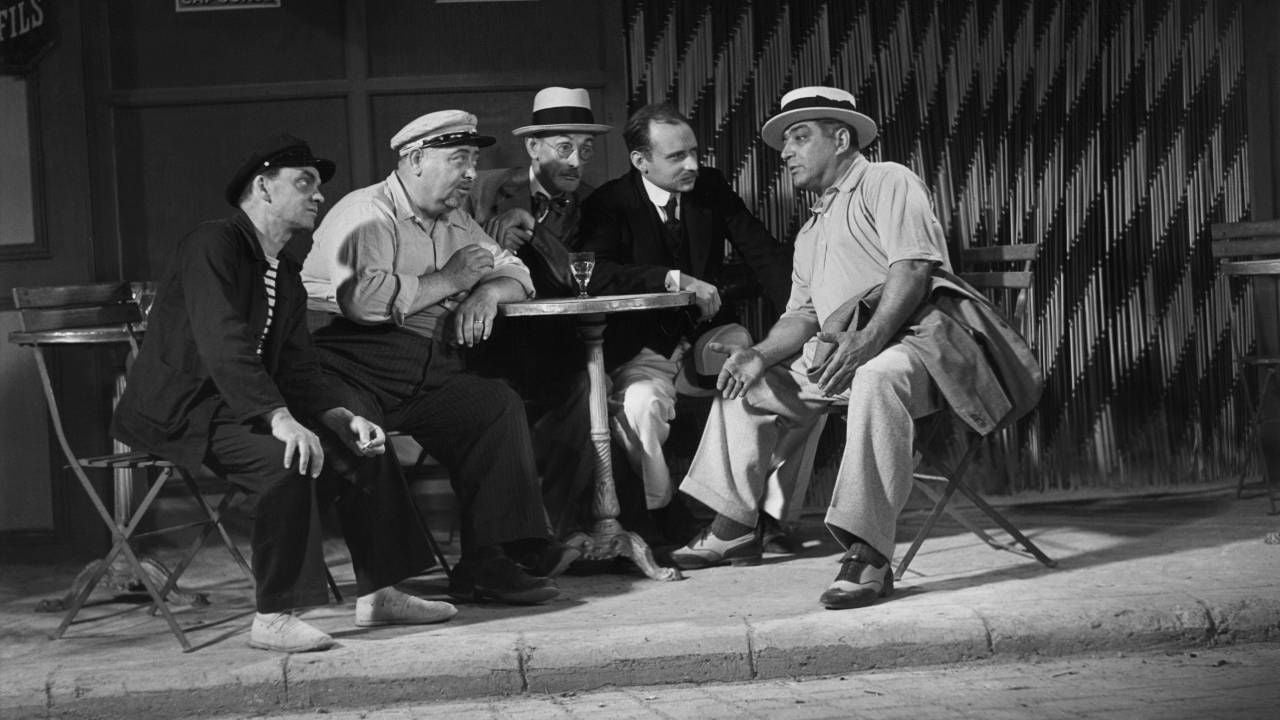“Unsightly” houses, the change of organization expert Marie Kondo and the so-called “British Woman Burnout” – there is a new wave of realism about how we live our lives.
html[data-range=”xlarge”] figure image img.img-3cbbe7bdcde2ef4b4516fcb3232742d77g8i5tz3 { width: 774px; height: 435px; }HTML[data-range=”large”] figure image img.img-3cbbe7bdcde2ef4b4516fcb3232742d77g8i5tz3 { width: 548px; height: 308px; }HTML[data-range=”small”] figure image img.img-3cbbe7bdcde2ef4b4516fcb3232742d77g8i5tz3, html[data-range=”medium”] figure image img.img-3cbbe7bdcde2ef4b4516fcb3232742d77g8i5tz3 { width: 564px; height: 317px; }
“My house is a mess.”
Five harmless words. But when they came from home organization guru Marie Kondo, they were enough to set the internet abuzz.
For nearly a decade, Kondo has been introducing the world to the concept of keeping only items that “bring you joy” in the house and teaching you how to fold your pants into little pouches. Her success led her to create her own television show on Netflix.
But, apparently, the birth of her three children radically changed Marie Kondo’s lifestyle.
According to The Washington Post, having a super-tidy home is no longer her top priority: “I’ve given up on it and it’s been good for me,” she says. “I understand now that the important thing for me is to enjoy time at home with my children.”
The interview generated an explosion of commentary on the newspaper’s website. Some showed the riot of people who felt cheated.
The mothers were distressed by what they perceived as Kondo’s hypocrisy in changing her mind about these exceptional and even impossible standards of organization. But most of the reactions have actually been pretty positive.
The most common feeling in the latest wave of comments has been one of relief. After all, someone who has built a highly lucrative career based on organization has admitted that priorities are different at every stage of life.
Marie Kondo’s afterthought is undoubtedly authentic. There’s nothing like a child to make tidying up seem excruciatingly drudgery. And few things bring more joy than playing with a child.
But it could also keep tabs on the passage of time and tap into a new wave of realism about the way we live. Calling this wave a “trend” seems hypocritical when, for many of us, it’s simply a common way of being – but this time, what’s there is a complete and utter mess.

The Oxford Dictionary of the English Language’s expression of the year 2022 – chosen by a large majority of votes from the public – was “leprechaun mode(literally, “pixie mode”), defined as an “overtly self-indulgent, lazy, sloppy, or selfish type of behavior that typically rejects society’s norms or expectations.”
After all of us became obsessed with keeping our homes nice and comfortable during the pandemic, it seems like 2022 was the year we gave it all up and embraced the chaos and clutter that comes with normal life.
To understand why we might now be embracing clutter, it’s worth remembering the strength the anti-clutter movement has gained in recent years. Marie Kondo is not alone – there are many other TV shows about the organization, such as the series Get your life in orderfrom the BBC and The Home Edit – The art of organizingfrom Netflix.
And it is no coincidence that this obsession with order, order, calm and cleanliness emerged around the same time that photo and video social networks became mainstream. Instagram, YouTube, and most recently TikTok, the video-sharing app that has spawned thousands of trends, are largely to blame.
TikTok has proven to be the perfect vehicle for sharing clean, artfully decorated, and unaffordably minimalist homes — and of course there’s a hashtag for that in English. Posts tagged with #aesthetics have reached over 202 billion views!
And you’ll probably recognize the shape of these posts, even if you don’t use the app: beautiful, well-crafted images that showcase people’s lifestyles in quiet, relaxing homes, painted in beige and white, filled with clever storage solutions hyper-ordered objects and drawers, with a few scented candles, elegant tables and suspiciously healthy potted plants, to add a (very generic) touch of personality.
Think of Kim Kardashian’s stark rooms, or a catalog of bespoke luxury goods, depending on your generation, to get a feel for the images.
And the interior design seems to have been influenced by another trend that has become popular online, called in English the “That girl” – “that girl”. The waking girl posts online, drinks a green smoothie, does her morning yoga session in pastel workout clothes, and sips a matcha latte for breakfast.
She likes healthy food, natural beauty, a clean house and posting it all online. “That girl” is the exact opposite of “pixie mode”.
But now there’s a serious backlash against all of this — which shouldn’t be surprising, since these lifestyle goals are unattainable and even comical for most people, as well as being expensive, labor-intensive, and, well, boring.
And not everyone finds the therapeutic organization. Indeed, for some, tidying up is a source of anguish.
Signaling the changes, the biggest app launched last year was BeReal, which encourages users to take honest photos wherever they are, showing what they’re up to, at random times each day. It is meant to be the very antithesis of the heavily staged content we have all grown accustomed to seeing.
accept the chaos
TikTok can be fast and unforgiving. It shouldn’t be taken too seriously, but it’s still a handy thermometer of these evolving trends.
The organized mess has been spreading for some time, with the arrival of the so-called clustercore, the opposite of minimalism – the art of keeping huge amounts of stuff in the house (like old trinkets, collections or retro items) and embracing color and noise. It’s messy maximalism: true chaos, but lovingly organized chaos.

Another current microtrend on TikTok that seems to embrace clutter as well is girls showing off their messy nightstands. But while they may look cluttered, it’s easy to suspect that, in reality, this furniture is extremely well managed. After all, you may see an array of hand-picked skincare products, dainty jewellery, stacks of enviable books, more candles…but not a dirty cup, not a used handkerchief in sight!
Another recent trend seems to be offering another take on the stark reality: “non-aesthetic” home videos. They are completely ordinary houses, with ugly furniture, piles of linen, children’s toys scattered on the floor, kennels, dripping faucets or poor quality appliances.
The images are real and we can identify with them. They remind us that many people can’t live in a gleaming model home and don’t have the time to maintain that spotless cleanliness.
But many of these home videos marked with #nonaesthetic (something like “no aesthetic”) are about tidying up, cleaning or reconfiguring, i.e. a reset, another hugely popular category of online content. They even go against people who were never convinced by Marie Kondo that decluttering is a way of life and not a chore.
At the very least, non-aesthetic cleaning videos appear to be a little more realistic than some of the staged content available online, like @kaelimaee’s TikTok video, which shows a parody of herself “aesthetically” presenting her tax return and the soothing effects of your pile of receipts.
busy and charming
It’s not just our homes that are at stake. One of the fashion microtrends that has attracted the most attention on TikTok in recent months is the so-called Exhausted Englishwoman (something like “Exhausted Englishwoman”, in Portuguese).
Gen Z have long admired the Y2K (Fashion of the Year 2000) trend, but surely no one predicted this look would make a comeback: they’re the edgy, savvy middle-class white British women of early rom-coms of the 20th century. , with her beautiful hair unkempt, gathered or gathered in a chignon.
They can wear a comfy coat, high boots, comfy knit sweaters, a totally normal knee-length skirt, or a tiny useless scarf, without worrying about matching pieces.
Some examples are Bridget Jones (Renee Zellweger), Kate Winslet in Love doesn’t go on vacation and Keira Knightley Simply love. And you get points for wearing an ugly man’s hat and a cardigan.
But the key word here is “sold out”. What attracts this look are certainly not the details, but the mood of the clothes that don’t match, of those who can’t find the brush, the realism of those who are always late.
It’s an aesthetic that has never been pretentious. Even in 2000s movies, it wasn’t about scruffy hats, but rather about providing a visual cue that quickly showed that they were busy, concerned, ordinary, glamorous women.
Of course, we must also examine these labels critically. Millennials can have a hard time predicting what some videos tell you about fashion trends, but keep in mind that many of these trends never leave your cellphone screen.
An example is the return of the trend seedy indie of the late 2000s, which caused more nostalgic discussion than people actually wearing ballet slippers in the woods.
That is, most of these trends live predominantly online. Which is fine, as fashion has always been about fun, escapism and imagination.
Fashion designers have long been creating crazy little trends that, in fact, no one follows. And it’s great to see that random Gen Z youth are now trending with their phones.
While you’re unlikely to see an army of teenage girls in angular skirts and high boots scurrying through the streets of the neighborhood, there’s something amusing about this idealization of the romantic role of the messy, ordinary, and slightly scruffy woman. And, let’s face it, the exhausted Englishwoman is the complete opposite of That girl. Maybe that’s why it’s so successful, even if mostly online.
The Burnout English Woman may have her tousled charms, but she also knows what’s important in life: not looking perfect 100% of the time, not having a spotless house, but drinking wine with her friends and attracting both Hugh Grant and Colin Firth , like Bridget Jones did in the movies.
And while it’s unlikely that Marie Kondo will ever wear a tiny crochet scarf, it’s safe to say that she’s grappling with the idea of not only tolerating a little fuss, but also enjoying it, so she can spend more time time to what really matters in life – the people you love.
Holly Williams is the author of the novel “What Time is Love?” (“What time is love?”, In free translation), published in February 2023.
read the original version of this report (in English) on the website BBC Culture.
Source: Terra
Ben Stock is a lifestyle journalist and author at Gossipify. He writes about topics such as health, wellness, travel, food and home decor. He provides practical advice and inspiration to improve well-being, keeps readers up to date with latest lifestyle news and trends, known for his engaging writing style, in-depth analysis and unique perspectives.









